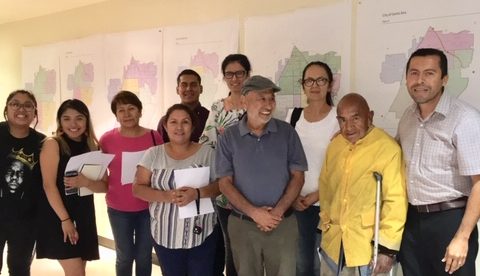
Redistricting is the re-drawing of every level of legislative districts to balance the population across districts. It is required every 10 years after the release of Census data.
Redistricting impacts who is elected at all legislative levels – therefore impacting the responsiveness of public policy and programs to low-income communities for ten years.
If legislative districts are drawn in ways that limit our community’s voice in government, we’re already limited in how effective we can be.

For example, suppose that there is an imaginary city where half of the voters are aligned with corporate interests (represented in the illustration with dollars and jewels) and the other half are aligned with environmental justice issues (represented in the illustration with climate change-related symbols). These two groups of voters would be fundamentally opposed on key climate policy. And let’s say that we need to draw a district that spans across the majority of the city Depending on how this district is drawn – giving an electoral advantage to corporate voters (District A) or environmental voters (District B) – can determine how the representative that ends up elected in the new district would stand on, and decide, environmental justice policies on behalf of voters in the district.
The same can be said of any issue area that impacts our communities – just transition, housing, public education, immigrant justice, health, and more.
Redistricting Rules under Proposition 11

One important law that sets the overall framework for Redistricting in California is Proposition 11, which was passed by voters in 2008. It removed decision-making around statewide redistricting from state legislature and designated control over the process to the newly created California Citizens Redistricting Commission (CCRC).
Prop. 11 established statewide redistricting as a nonpartisan process, requiring transparency and public input. It also formalized traditional redistricting principles as official rules.Prop. 11 only applies to congressional districts and state legislatures. In 2019, AB849/SB1276 was made law, introducing similar rules to county supervisorial and city council districts.
The guiding principle for redistricting in California under Prop. 11 is nonpartisanship – the process should not be exploited for the benefit of political parties or candidates, and instead ensures that there is fair representation of voters’ voices in the elections that take place in the new districts.
The rules of Proposition 11 are the following:
- Rule 1: Population Equality
- Rule 2: Voting Rights Act
- Rule 3: Contiguity
- Rule 4: Integrity of Established Geographic Areas
- Rule 5: Compactness
- Rule 6: Nesting
These rules are ranked – the rules listed first are the most important.
“The place of residence of any incumbent or political candidate shall not be considered in the creation of a map. Districts shall not be drawn for the purpose of favoring or discriminating against an incumbent, political candidate, or political party.”
“Districts shall…have reasonably equal population with other districts for the same office, except where deviation is required to comply with the federal Voting Rights Act or allowable by law.”
Proposition 11
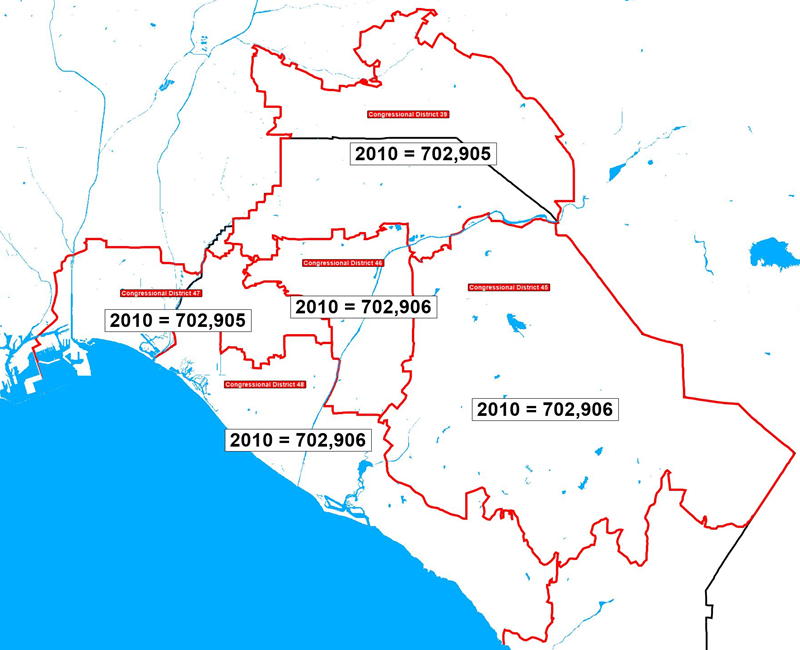
1. Population Equality
Each district elects and sends one representative to the legislative body to create laws as a group, and each representative must represent an equal number of people – otherwise, some people would be over-represented or under-represented in the legislature, against the principles of representative democracy.
Therefore, there must be an equal amount of people inside each district. As population tends to change at a different pace across different districts, adjustments are needed after a period of time.

2. Voting Rights Act
A direct result of Black leadership and struggle, the Voting Rights Act of 1965 prohibits racial discrimination in voting. Section 2 of the VRA prohibits any voting practice or procedure that discriminates against communities of color. Specifically, Section 2 protects against intentional discrimination, where redistricting plans are drawn to limit the electoral strength of communities of color.
At the same, Section 2 prohibits redistricting plans that have the effect of limiting the ability of communities of color to elect the candidates they want.
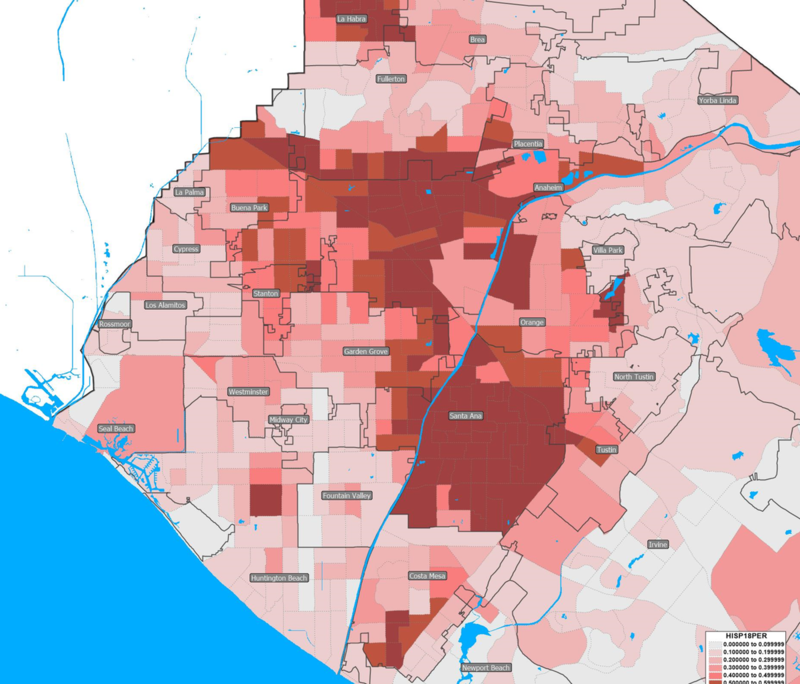
The two most relevant ways in which Black and minority racial groups have been discriminated against by weakening our voting power are the following:
“Cracking“: Dividing a community that could control policies in one district into two districts, limiting its ability to exercise power. The animated illustration showcases how it would be possible to divide the Latinx community in central Orange County in a way that would diminish our voting power.
“Packing“: Overconcentrating a community in a district, limiting their power to one district when they could control policies in two.
Section 2 requires that districts be drawn to protect communities of color if:
- A community of color is large and concentrated enough to make up 50% of a district.
- That community votes cohesively for a candidate of choice.
- Other voters in the district vote cohesively AGAINST that candidate.
Important! This is the only situation in which race can be the predominant factor in how lines are drawn. As a community of interest, race should be one of many factors guiding maps.
3. Contiguity
All parts of a district must be connected in one piece. This principle is called contiguity.
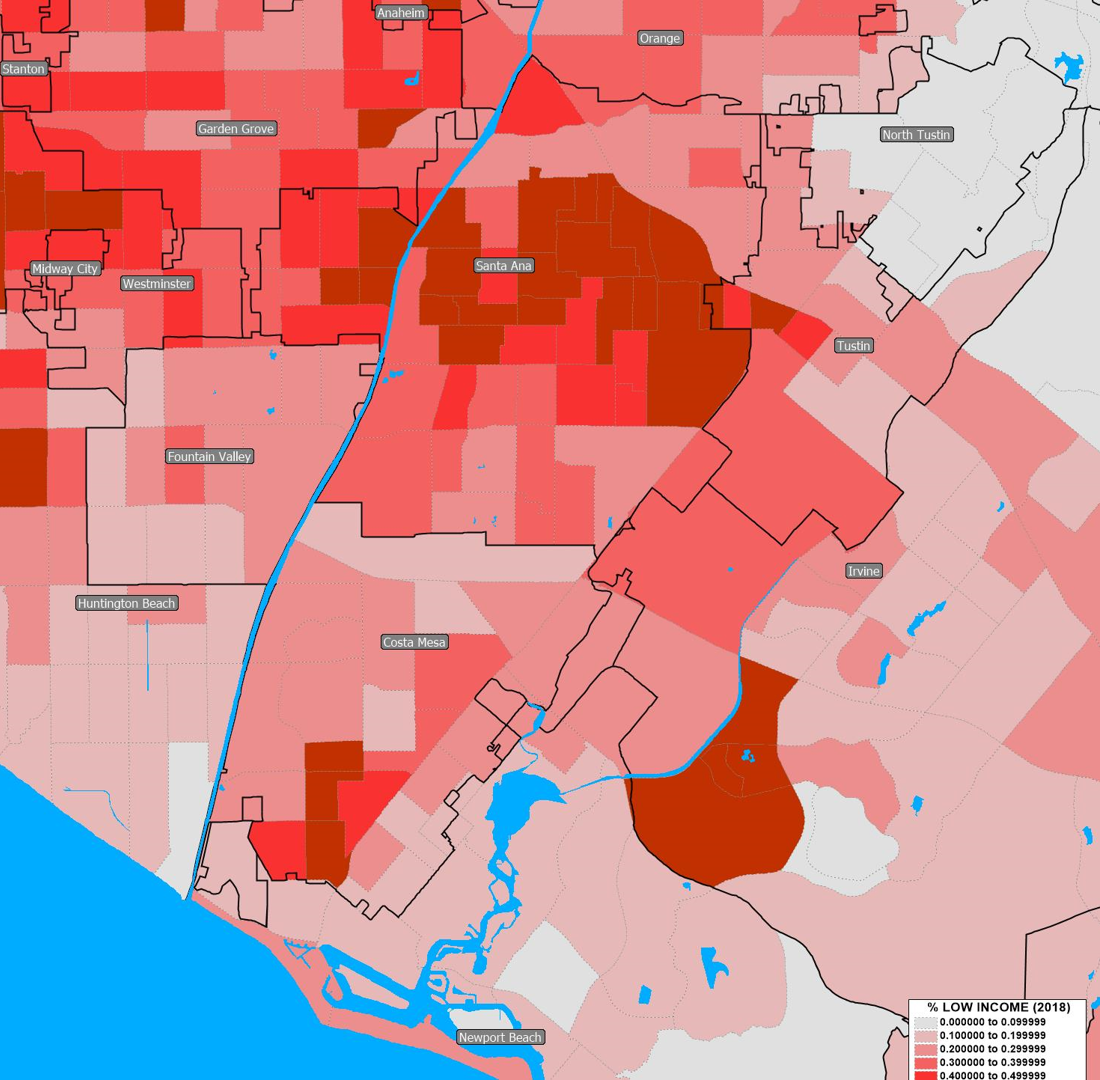
4. Integrity of Established Geographic Areas
Avoid dividing counties, cities, neighborhoods, and communities of interest when drawing districts.
“A community of interest is a contiguous population which shares common social and economic interests that should be included within a single district for purposes of its effective and fair representation.”
Proposition 11
Communities of interest should include those most in need of better representation, public policy:
- Low-income communities
- Communities of color
- Immigrant communities
Proposition 11 gives equal weight to maintaining city, county, neighborhood, and community of interest boundaries. So keeping a community of interest together can be used to justify dividing a county, city, or neighborhood.
“The geographic integrity of any city, county, city and county, neighborhood, or community of interest shall be respected to the extent possible without violating the requirements of any of the preceding subdivisions.”
“Communities of interest shall not include relationships with political parties, incumbents, or political candidates.”
Proposition 11
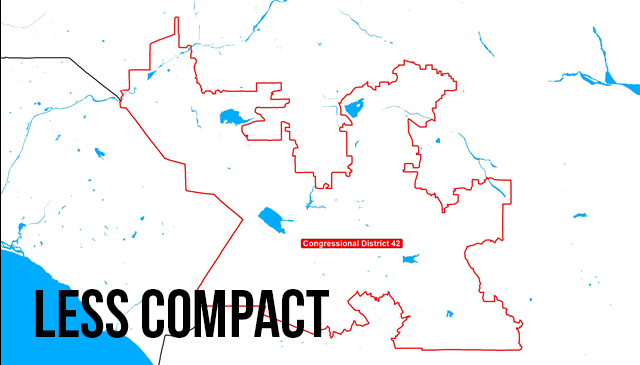
5. Compactness
“To the extent practicable, and where this does not conflict with the criteria above, districts shall be drawn to encourage geographical compactness such that nearby areas of population are not bypassed for more distant population.”
Proposition 11
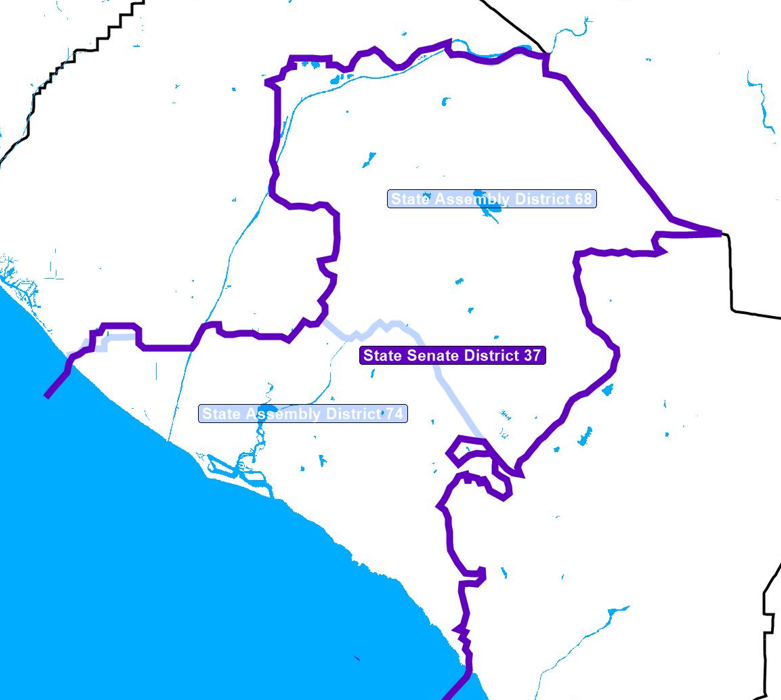
6. Nesting
“To the extent practicable, and where this does not conflict with the criteria above, each Senate district shall be comprised of two whole, complete, and adjacent Assembly districts.”
Proposition 11

Who draws the lines?
Proposition 11 designates control of the line-drawing process to the non-partisan California Citizens Redistricting Commission (CCRC), who must take broad community input to inform the decision making. Only Congress, State Senate, and State Assembly districts are designated to the CCRC. Other levels of government run on a different set of rules.
| Nonpartisan Restrictions? | Public Hearings Required? | Current Deadline* | |
|---|---|---|---|
| Congress, State Senate, State Assembly districts are drawn by the California Citizens Redistricting Commission who makes the decisions. The CCRC is a 14-member, independent commission. | Yes | Yes, pre & post | December 15, 2021 |
| The Orange County Board of Supervisors appoints a 5-member Redistricting Committee, and effectively it is the supervisors themselves who make the decisions. | Yes (new) | Yes, pre & post (new) | December 31, 2021 |
| For City Councils, details vary from city to city but typically decisions are made by the City Council members themselves. | Yes (new) | Yes, pre & post (new) | April 17, 2022 for most |
| For School Boards, details vary across localities but typically decisions are made by the Board members themselves. | No | No | February 28, 2022 |
